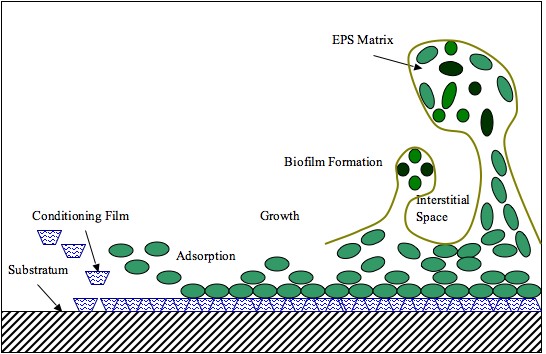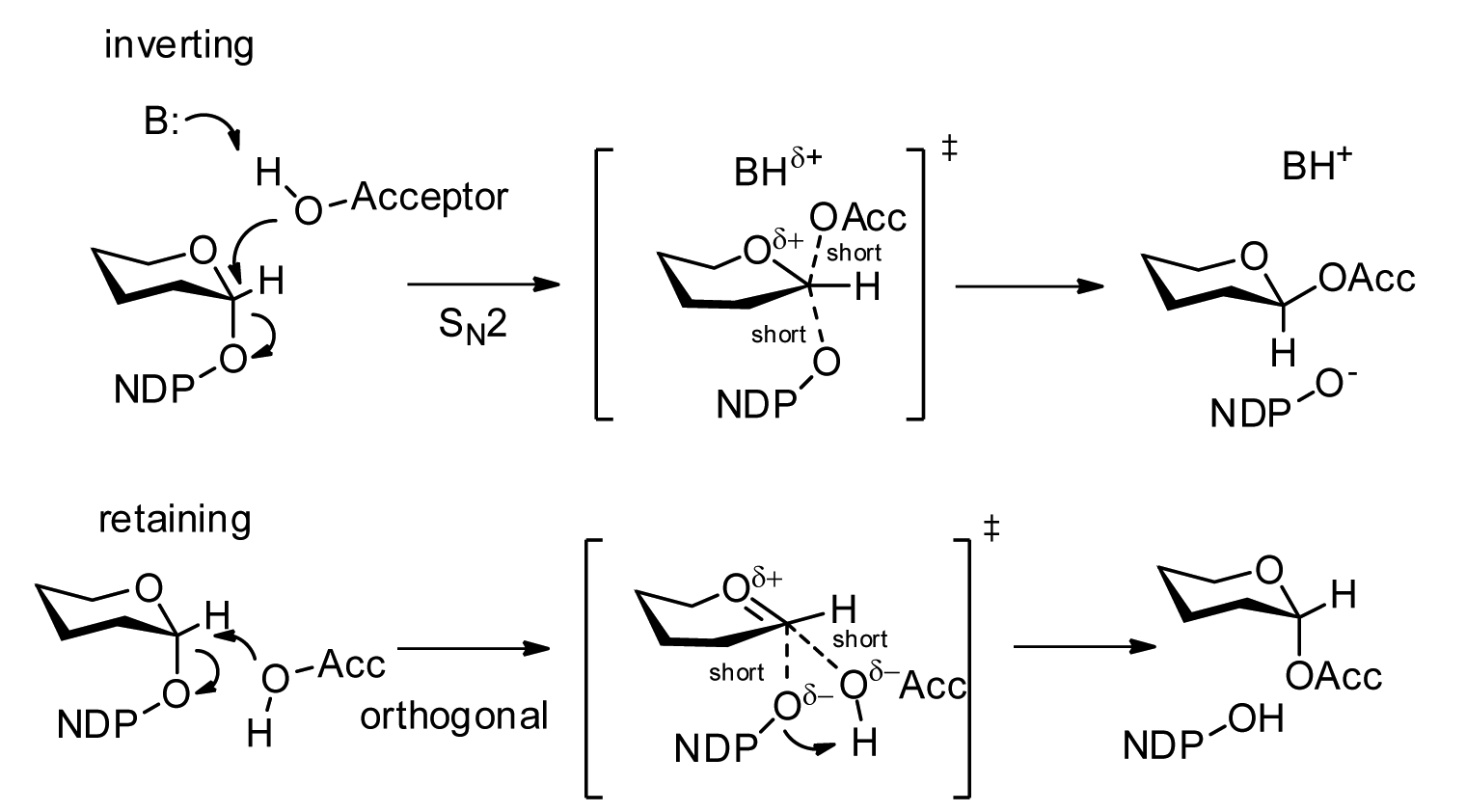|
Galactosaminogalactan
Galactosaminogalactan (commonly abbreviated as GAG or GG), is an exopolysaccharide composed of galactose and N-acetylgalactosamine (GalNAc). It is commonly found in the biofilm and cell wall of various fungal species. Although the sugar residues are arranged in no particular/discrete order, and thus a heteroglycan, the residues are all linked by α-1,4 glycosidic bonds. Galactosaminogalactan is typically extracted by ethanol precipitation from liquid culture or by alkaline treatment from the cell wall. Once extracted, galactosaminogalactan becomes highly insoluble. In ''Aspergillus fumigatus'', a causative agent of aspergillosis, galactosaminogalactan is required for adherence to host tissue, to mask PAMPs like β-1,3-glucans and to mediate virulence in several animal models. While its role in pathogenesis is still being defined, galactosaminogalactan has been found in histological sections of lungs of patients with aspergillosis. Besides its role in fungal virulence, certain ... [...More Info...] [...Related Items...] OR: [Wikipedia] [Google] [Baidu] |
Extracellular Polymeric Substance
Extracellular polymeric substances (EPS) are biopolymer, natural polymers of molecular mass, high molecular weight secreted by microorganisms into their environment. EPS establish the functional and structural integrity of biofilms, and are considered the fundamental component that determines the physicochemical properties of a biofilm. EPS in the matrix of biofilms provides compositional support and protection of microbial communities from the harsh environments. Components of EPS can be of different classes of polysaccharides, lipids, nucleic acids, proteins, lipopolysaccharides, and minerals. Components EPS are mostly composed of polysaccharides (exopolysaccharides) and proteins, but include other macromolecules such as DNA, lipids and Humic acid, humic substances. EPS are the construction material of bacterial settlements and either remain attached to the cell's outer surface, or are secreted into its growth medium. These compounds are important in biofilm formation and cells ... [...More Info...] [...Related Items...] OR: [Wikipedia] [Google] [Baidu] |
Histology
Histology, also known as microscopic anatomy or microanatomy, is the branch of biology that studies the microscopic anatomy of biological tissue (biology), tissues. Histology is the microscopic counterpart to gross anatomy, which looks at larger structures visible without a microscope. Although one may divide microscopic anatomy into ''organology'', the study of organs, ''histology'', the study of tissues, and ''cytology'', the study of cell (biology), cells, modern usage places all of these topics under the field of histology. In medicine, histopathology is the branch of histology that includes the microscopic identification and study of diseased tissue. In the field of paleontology, the term paleohistology refers to the histology of fossil organisms. Biological tissues Animal tissue classification There are four basic types of animal tissues: muscle tissue, nervous tissue, connective tissue, and epithelial tissue. All animal tissues are considered to be subtypes of these ... [...More Info...] [...Related Items...] OR: [Wikipedia] [Google] [Baidu] |
UDP-glucose 4-epimerase
The enzyme UDP-glucose 4-epimerase (), also known as UDP-galactose 4-epimerase or GALE, is a homodimeric epimerase found in bacterial, fungal, plant, and mammalian cells. This enzyme performs the final step in the Leloir pathway of galactose metabolism, catalyzing the reversible conversion of UDP-galactose to UDP-glucose. GALE tightly binds nicotinamide adenine dinucleotide (NAD+), a co-factor required for catalytic activity. Additionally, human and some bacterial GALE isoforms reversibly catalyze the formation of UDP-''N''-acetylgalactosamine (UDP-GalNAc) from UDP-''N''-acetylglucosamine ( UDP-GlcNAc) in the presence of NAD+, an initial step in glycoprotein or glycolipid synthesis. Historical significance Dr. Luis Leloir deduced the role of GALE in galactose metabolism during his tenure at the Instituto de Investigaciones Bioquímicas del Fundación Campomar, initially terming the enzyme waldenase. Dr. Leloir was awarded the 1970 Nobel Prize in Chemistry for his discover ... [...More Info...] [...Related Items...] OR: [Wikipedia] [Google] [Baidu] |
Uridine Diphosphate N-acetylglucosamine
Uridine diphosphate ''N''-acetylglucosamine or UDP-GlcNAc is a nucleotide sugar and a coenzyme in metabolism. It is used by glycosyltransferases to transfer ''N''-acetylglucosamine residues to substrates. UDP-GlcNAc is used for making glycosaminoglycans, proteoglycans, and glycolipids. D-Glucosamine is made naturally in the form of glucosamine-6-phosphate, and is the biochemical precursor of all nitrogen-containing sugars. To be specific, glucosamine-6-phosphate is synthesized from fructose 6-phosphate and glutamine as the first step of the hexosamine biosynthesis pathway. The end-product of this pathway is UDP-GlcNAc. Some enzymes involved in the biosynthesis of UDP-GlcNAc vary between prokaryotic and eukaryotic organisms, serving as potential drug targets for antibiotic development. Biosignaling UDP-GlcNAc is extensively involved in intracellular signaling as a substrate for ''O''-linked ''N''-acetylglucosamine transferases (OGTs) to install the ''O''-GlcNAc post-transl ... [...More Info...] [...Related Items...] OR: [Wikipedia] [Google] [Baidu] |
UDP-glucose
Uridine diphosphate glucose (uracil-diphosphate glucose, UDP-glucose) is a nucleotide sugar. It is involved in glycosyltransferase reactions in metabolism. Functions UDP-glucose is used in nucleotide sugar metabolism as an activated form of glucose, a substrate for enzymes called glucosyltransferases. UDP-glucose is a precursor of glycogen and can be converted into UDP-galactose and UDP-glucuronic acid, which can then be used as substrates by the enzymes that make polysaccharides containing galactose and glucuronic acid. UDP-glucose can also be used as a precursor of sucrose, lipopolysaccharides and glycosphingolipids. Components UDP-glucose consists of the pyrophosphate group, ribose, glucose, and uracil. See also * DNA * Nucleoside * Nucleotide * Oligonucleotide * RNA * TDP-glucose * Uracil Uracil () (nucleoside#List of nucleosides and corresponding nucleobases, symbol U or Ura) is one of the four nucleotide bases in the nucleic acid RNA. The others are adenine ... [...More Info...] [...Related Items...] OR: [Wikipedia] [Google] [Baidu] |
UDP-galactose
Uridine diphosphate galactose (Uridine diphosphate, UDP-galactose) is an intermediate in the production of polysaccharides. It is important in nucleotide sugars metabolism, and is the substrate for the transferase B4GALT5. Sugar metabolism Uridine diphosphate (UDP)-galactose is relevant in glycolysis. UDP-galactose is the activated form of Gal, a crucial monosaccharide building block for human milk oligosaccharide (HMO). The activated form of galactose (Gal) serves as a donor molecule involved in catalyzing the conversion of UDP-galactose to UDP-glucose. The conversion is a rate-limiting step essential to the pace of UDP-glucose production that determines the completion of glycosylation reactions. To further explain, UDP-galactose is derived from a galactose molecule which is an epimer of glucose, and via the Leloir pathway, it is used be used as a precursor for the metabolism of glucose into pyruvate. When lactose is hydrolyzed, D-Galactose enters the liver via the bloodstream. ... [...More Info...] [...Related Items...] OR: [Wikipedia] [Google] [Baidu] |
Glycosyltransferase
Glycosyltransferases (GTFs, Gtfs) are enzymes ( EC 2.4) that establish natural glycosidic linkages. They catalyze the transfer of saccharide moieties from an activated nucleotide sugar (also known as the "glycosyl donor") to a nucleophilic glycosyl acceptor molecule, the nucleophile of which can be oxygen- carbon-, nitrogen-, or sulfur-based. The result of glycosyl transfer can be a carbohydrate, glycoside, oligosaccharide, or a polysaccharide. Some glycosyltransferases catalyse transfer to inorganic phosphate or water. Glycosyl transfer can also occur to protein residues, usually to tyrosine, serine, or threonine to give O-linked glycoproteins, or to asparagine to give N-linked glycoproteins. Mannosyl groups may be transferred to tryptophan to generate C-mannosyl tryptophan, which is relatively abundant in eukaryotes. Transferases may also use lipids as an acceptor, forming glycolipids, and even use lipid-linked sugar phosphate donors, such as dolichol phosphates in eukar ... [...More Info...] [...Related Items...] OR: [Wikipedia] [Google] [Baidu] |
Inflammation
Inflammation (from ) is part of the biological response of body tissues to harmful stimuli, such as pathogens, damaged cells, or irritants. The five cardinal signs are heat, pain, redness, swelling, and loss of function (Latin ''calor'', ''dolor'', ''rubor'', ''tumor'', and ''functio laesa''). Inflammation is a generic response, and therefore is considered a mechanism of innate immunity, whereas adaptive immunity is specific to each pathogen. Inflammation is a protective response involving immune cells, blood vessels, and molecular mediators. The function of inflammation is to eliminate the initial cause of cell injury, clear out damaged cells and tissues, and initiate tissue repair. Too little inflammation could lead to progressive tissue destruction by the harmful stimulus (e.g. bacteria) and compromise the survival of the organism. However inflammation can also have negative effects. Too much inflammation, in the form of chronic inflammation, is associated with variou ... [...More Info...] [...Related Items...] OR: [Wikipedia] [Google] [Baidu] |
Apoptosis
Apoptosis (from ) is a form of programmed cell death that occurs in multicellular organisms and in some eukaryotic, single-celled microorganisms such as yeast. Biochemistry, Biochemical events lead to characteristic cell changes (Morphology (biology), morphology) and death. These changes include Bleb (cell biology), blebbing, Plasmolysis, cell shrinkage, Karyorrhexis, nuclear fragmentation, Pyknosis, chromatin condensation, Apoptotic DNA fragmentation, DNA fragmentation, and mRNA decay. The average adult human loses 50 to 70 1,000,000,000, billion cells each day due to apoptosis. For the average human child between 8 and 14 years old, each day the approximate loss is 20 to 30 billion cells. In contrast to necrosis, which is a form of traumatic cell death that results from acute cellular injury, apoptosis is a highly regulated and controlled process that confers advantages during an organism's life cycle. For example, the separation of fingers and toes in a developing human embryo ... [...More Info...] [...Related Items...] OR: [Wikipedia] [Google] [Baidu] |
Neutrophil
Neutrophils are a type of phagocytic white blood cell and part of innate immunity. More specifically, they form the most abundant type of granulocytes and make up 40% to 70% of all white blood cells in humans. Their functions vary in different animals. They are also known as neutrocytes, heterophils or polymorphonuclear leukocytes. They are formed from stem cells in the bone marrow and differentiated into subpopulations of neutrophil-killers and neutrophil-cagers. They are short-lived (between 5 and 135 hours, see ) and highly mobile, as they can enter parts of tissue where other cells/molecules cannot. Neutrophils may be subdivided into segmented neutrophils and banded neutrophils (or bands). They form part of the polymorphonuclear cells family (PMNs) together with basophils and eosinophils. The name ''neutrophil'' derives from staining characteristics on hematoxylin and eosin ( H&E) histological or cytological preparations. Whereas basophilic white blood cells ... [...More Info...] [...Related Items...] OR: [Wikipedia] [Google] [Baidu] |
Virulence
Virulence is a pathogen's or microorganism's ability to cause damage to a host. In most cases, especially in animal systems, virulence refers to the degree of damage caused by a microbe to its host. The pathogenicity of an organism—its ability to cause disease—is determined by its virulence factors. In the specific context of gene for gene systems, often in plants, virulence refers to a pathogen's ability to infect a resistant host. Virulence can also be transferred using a plasmid. The noun ''virulence'' (Latin noun ) derives from the adjective ''virulent'', meaning disease severity. The word ''virulent'' derives from the Latin word ''virulentus'', meaning "a poisoned wound" or "full of poison". The term ''virulence'' does not only apply to viruses. From an ecological standpoint, virulence is the loss of fitness induced by a parasite upon its host. Virulence can be understood in terms of proximate causes—those specific traits of the pathogen that help make the host ... [...More Info...] [...Related Items...] OR: [Wikipedia] [Google] [Baidu] |




